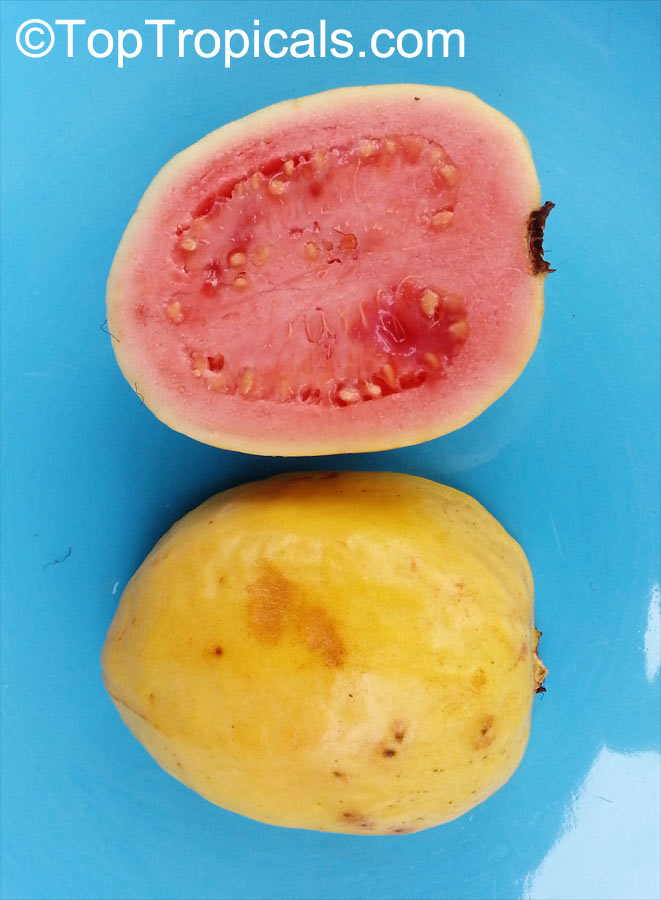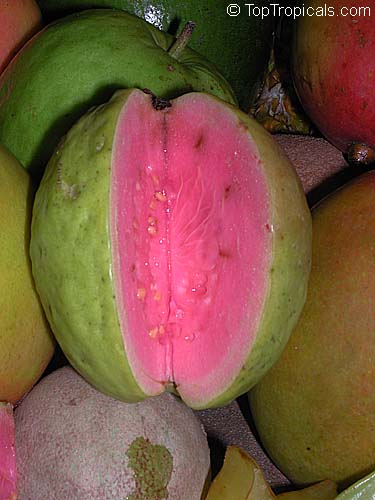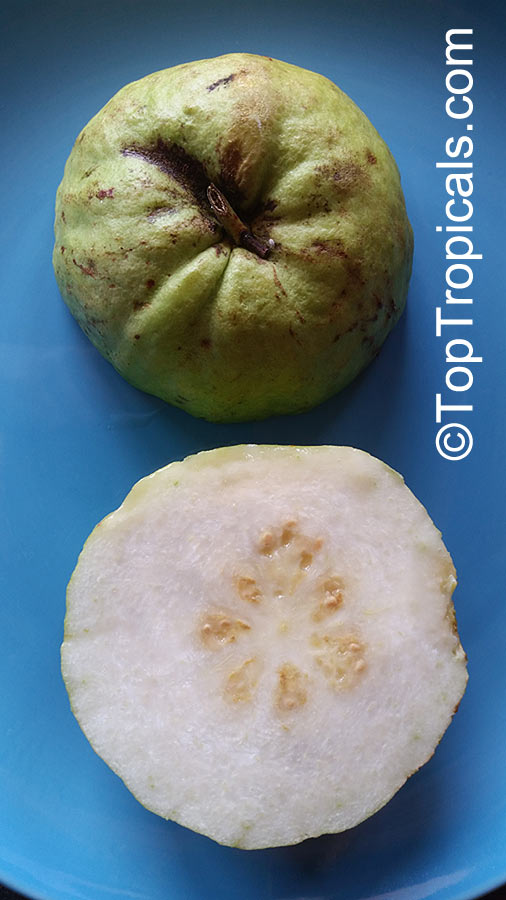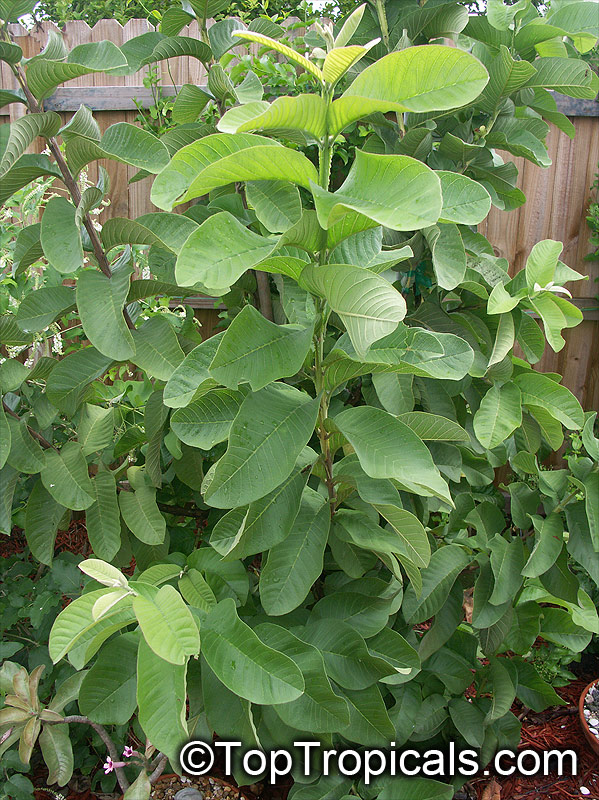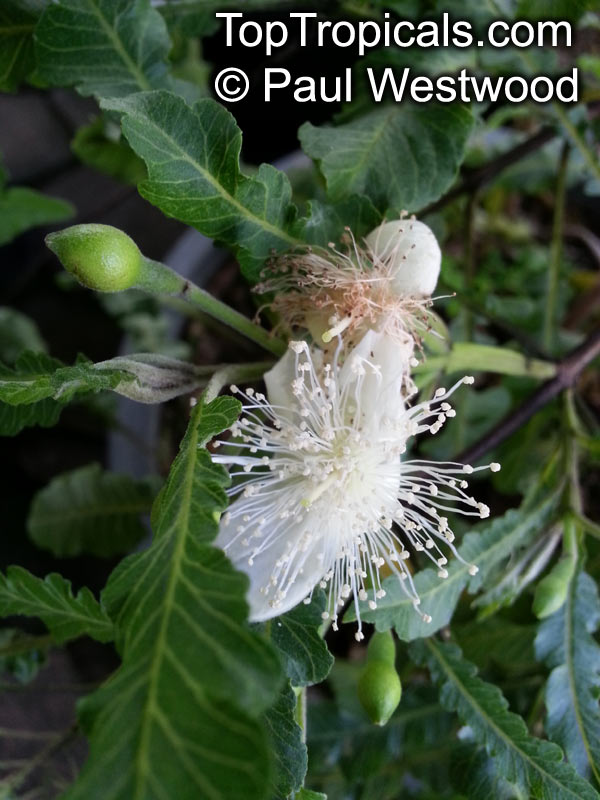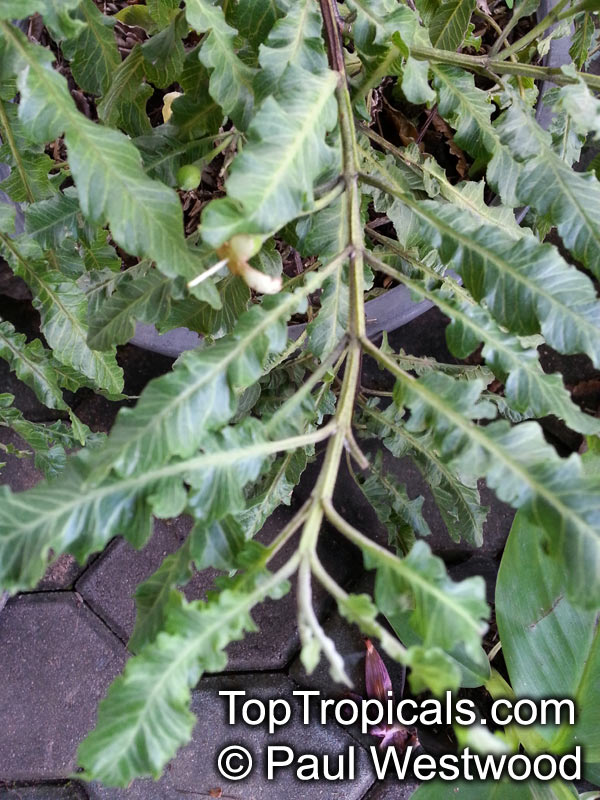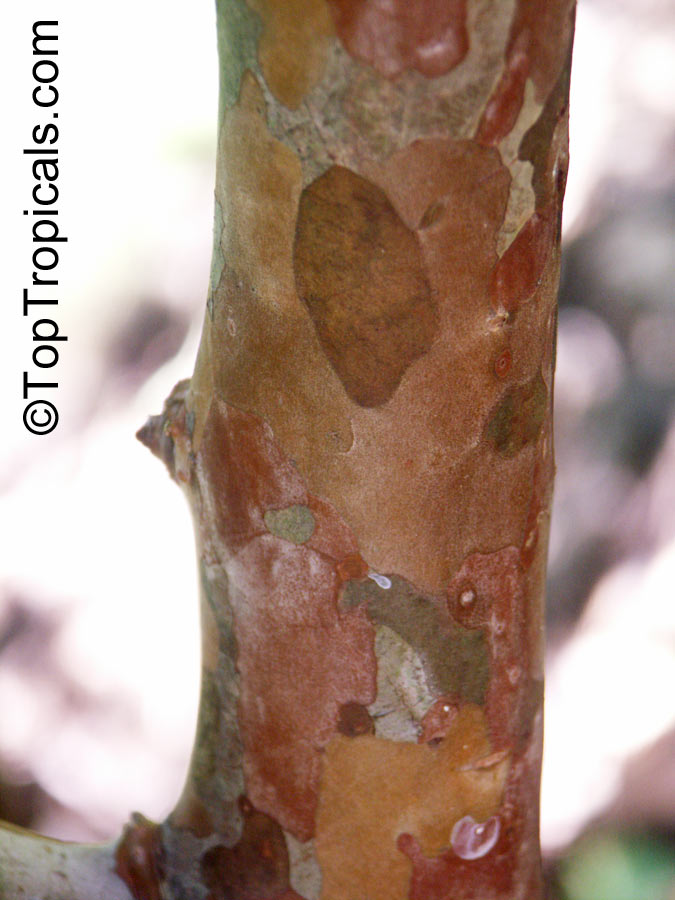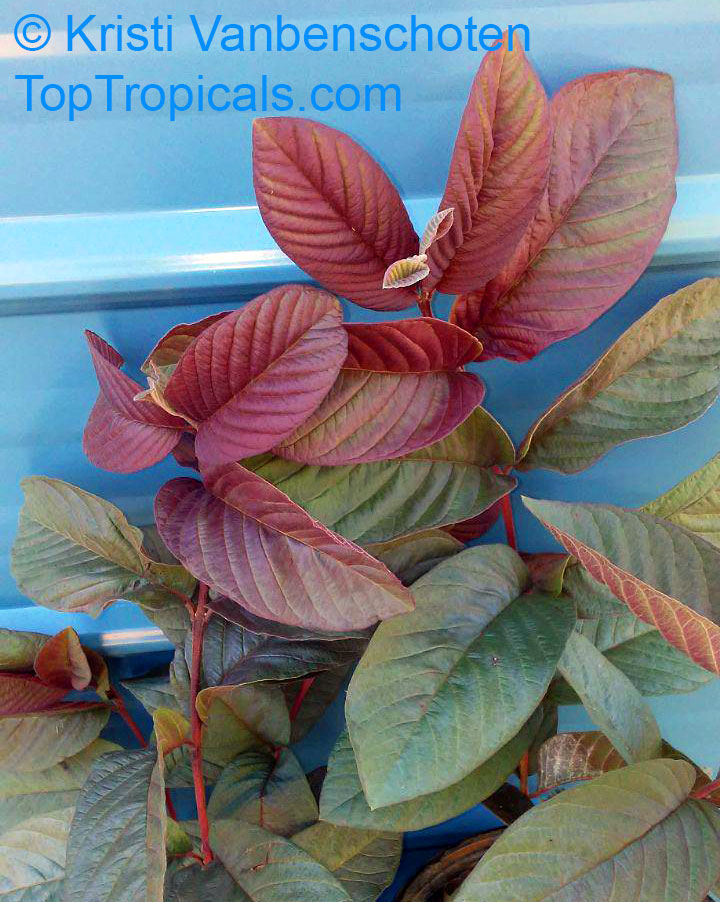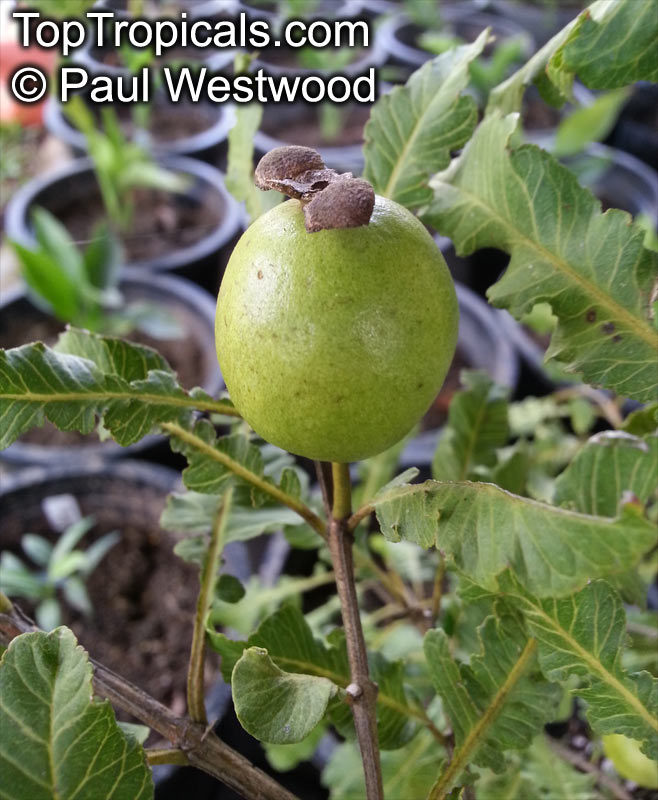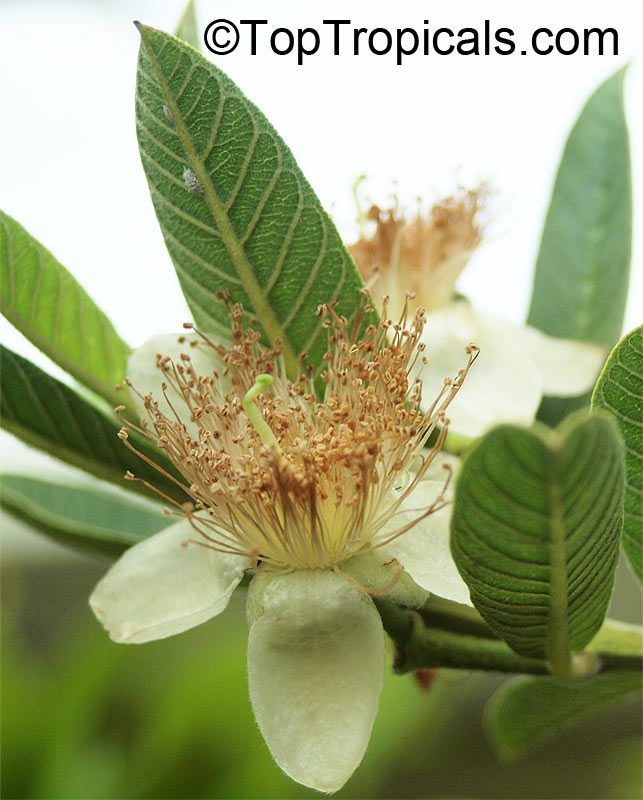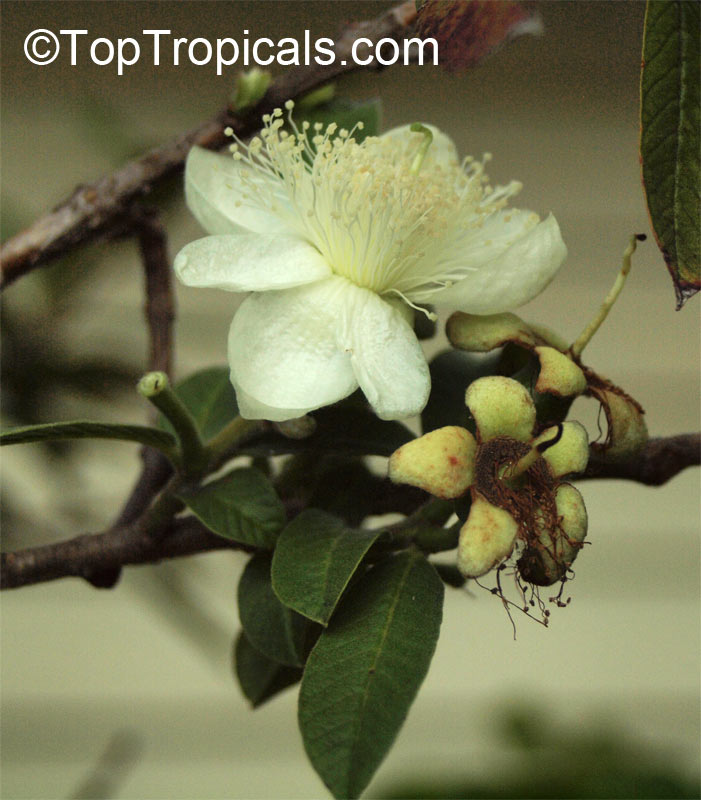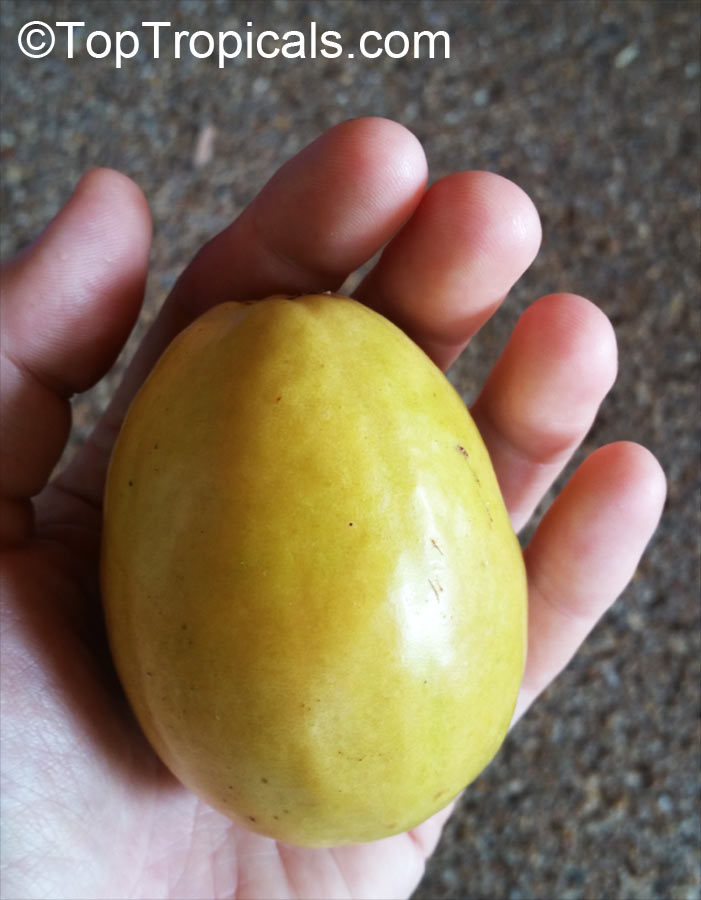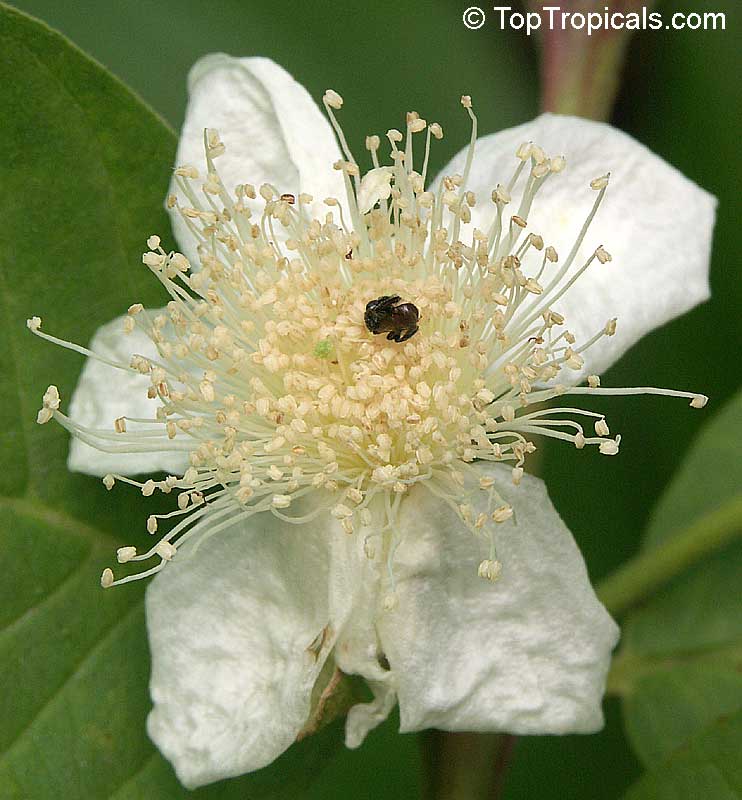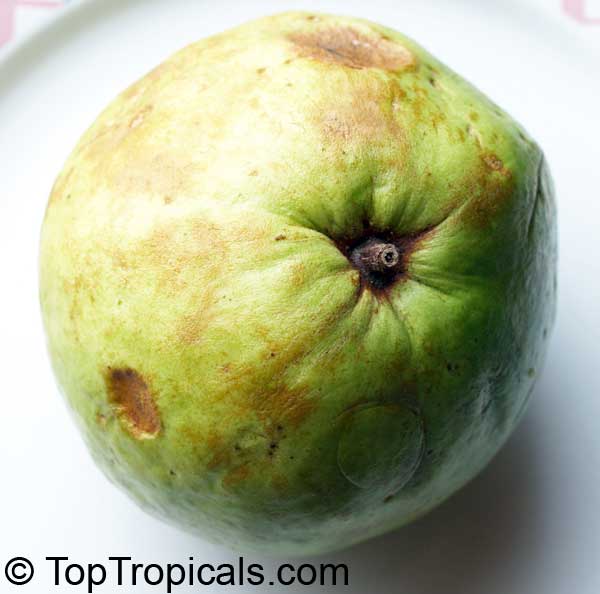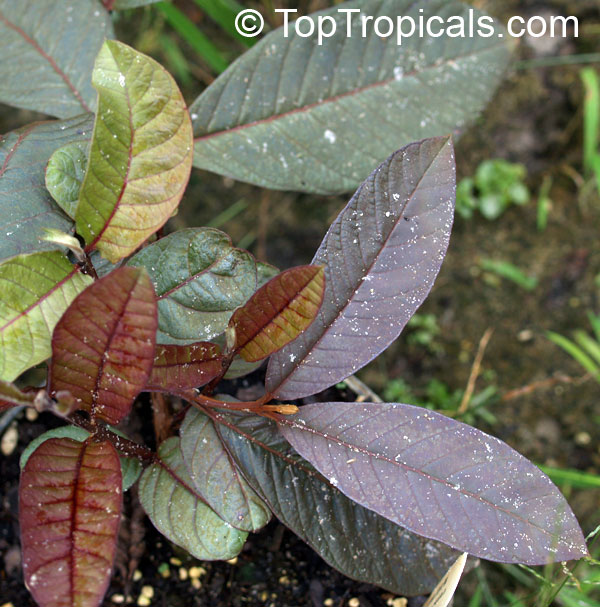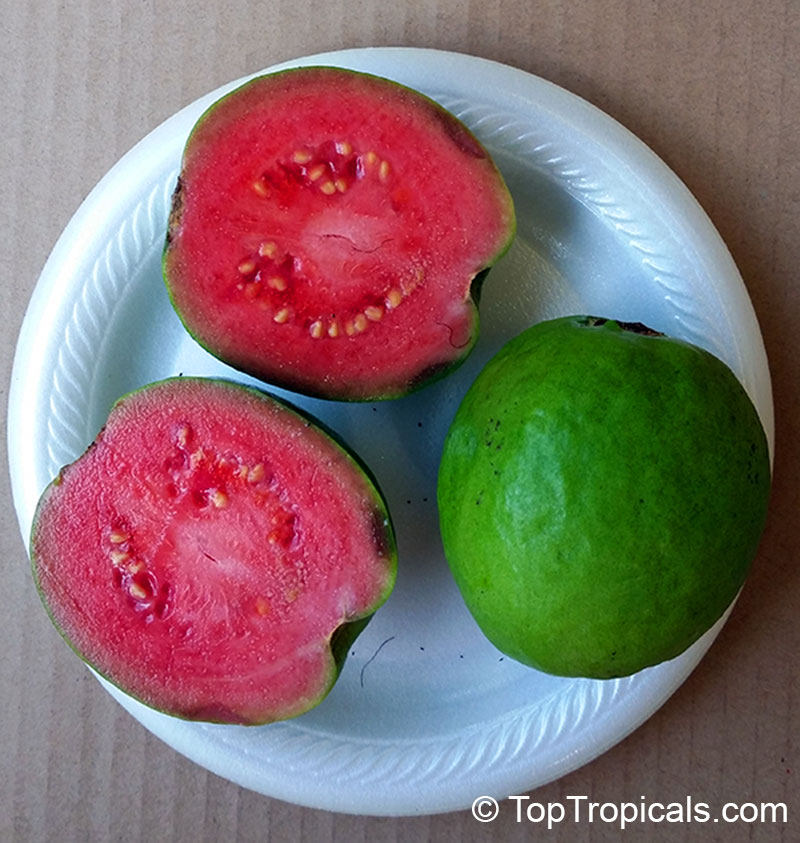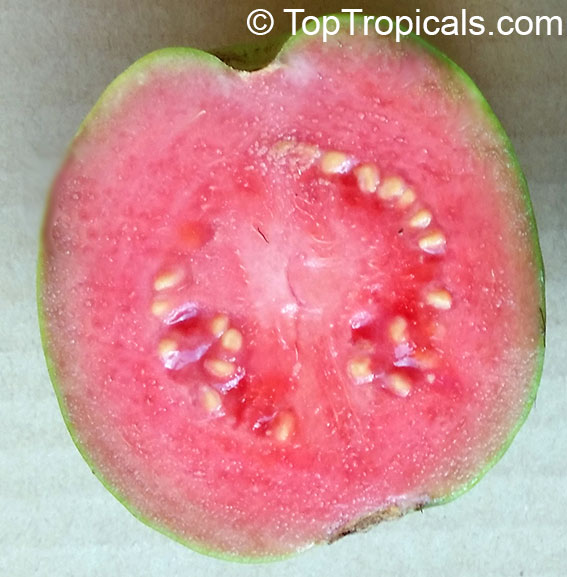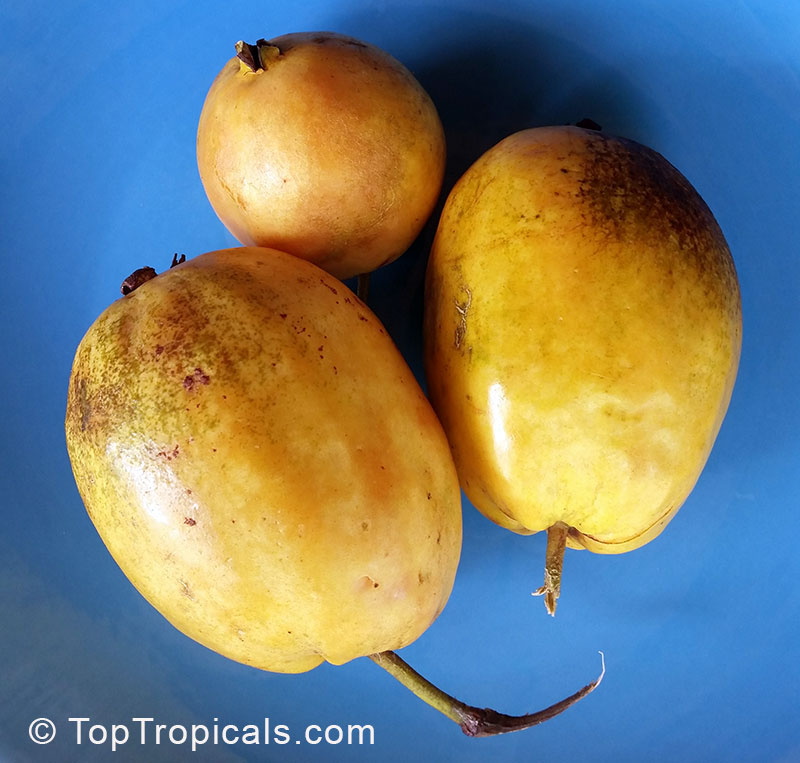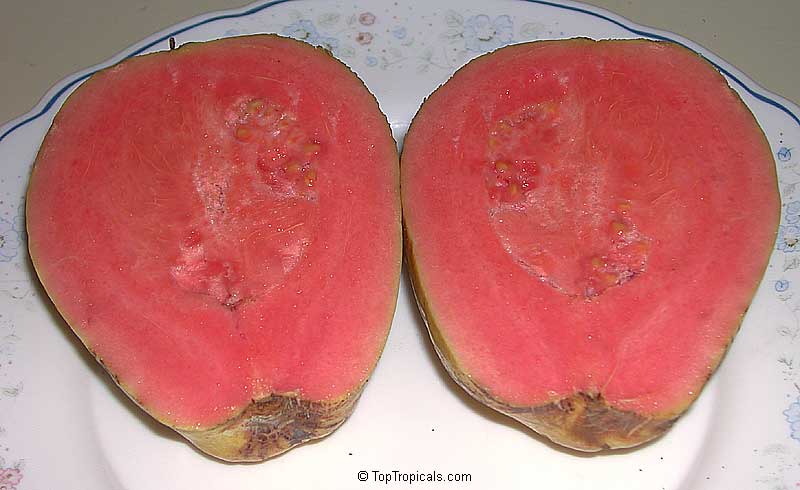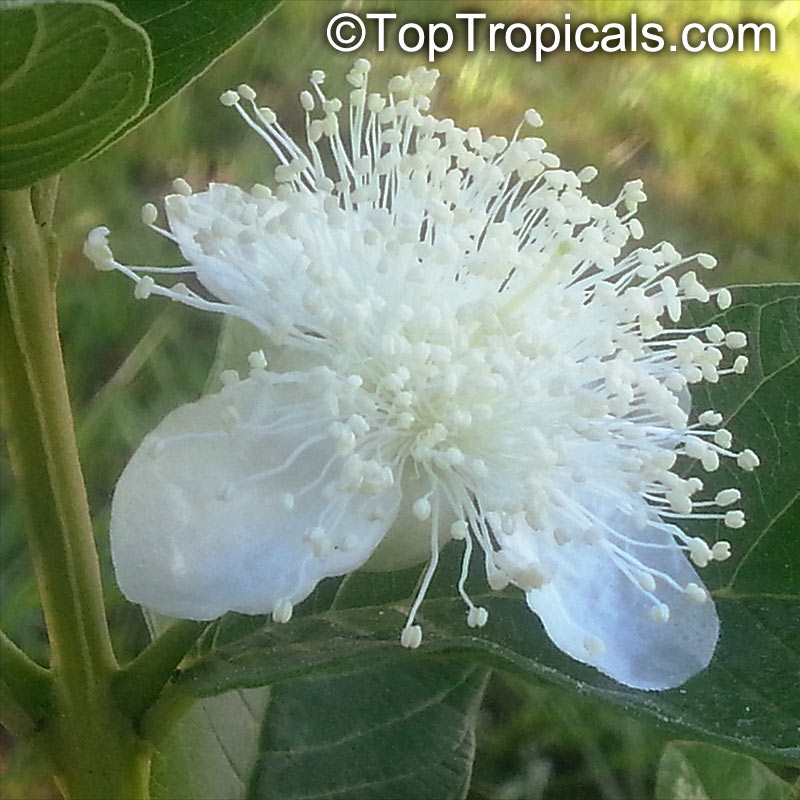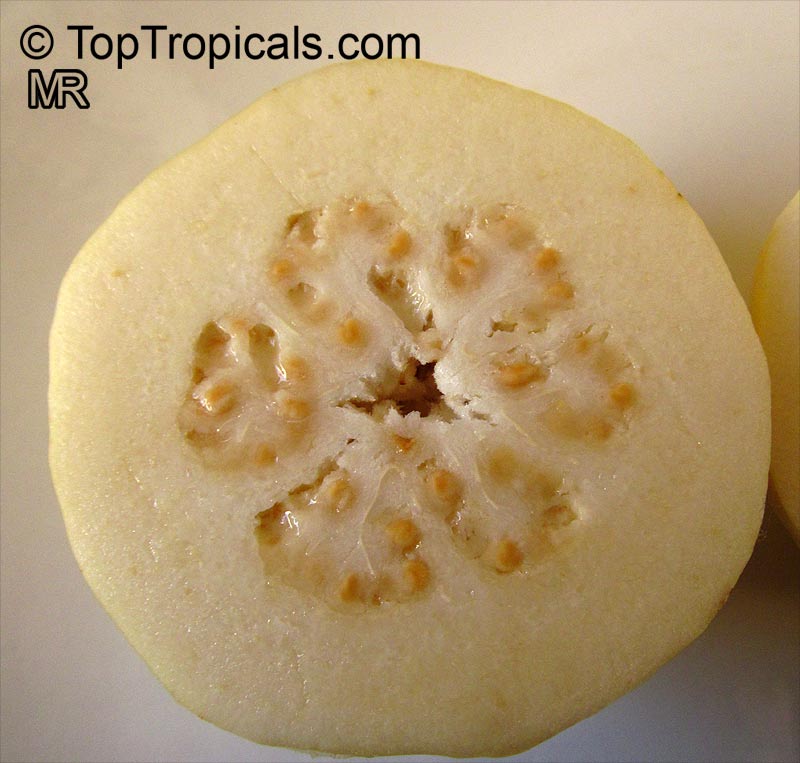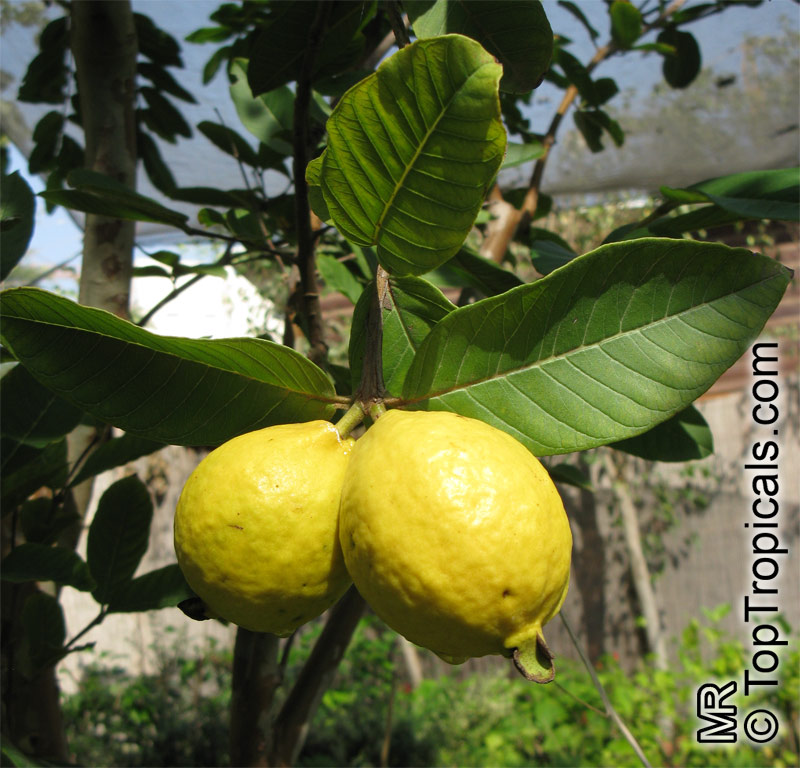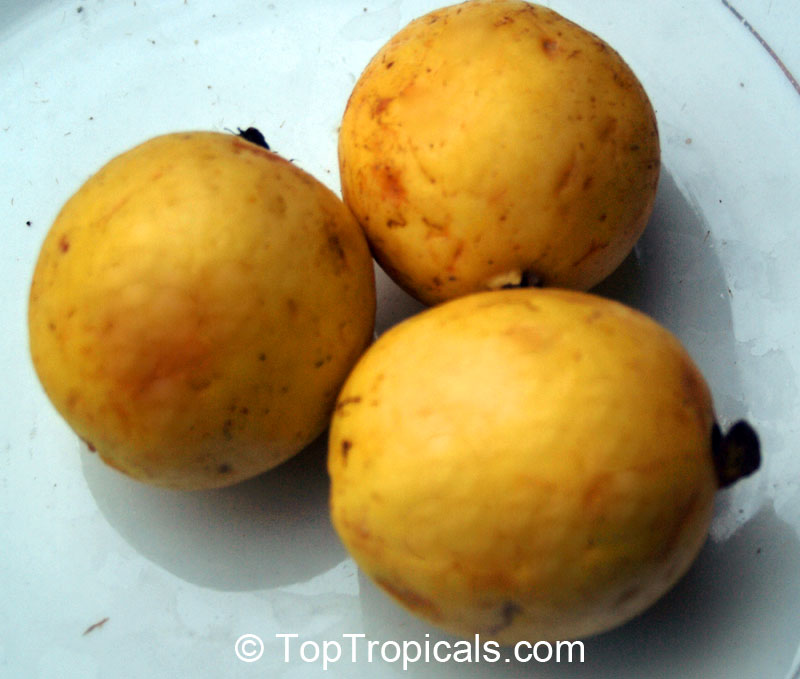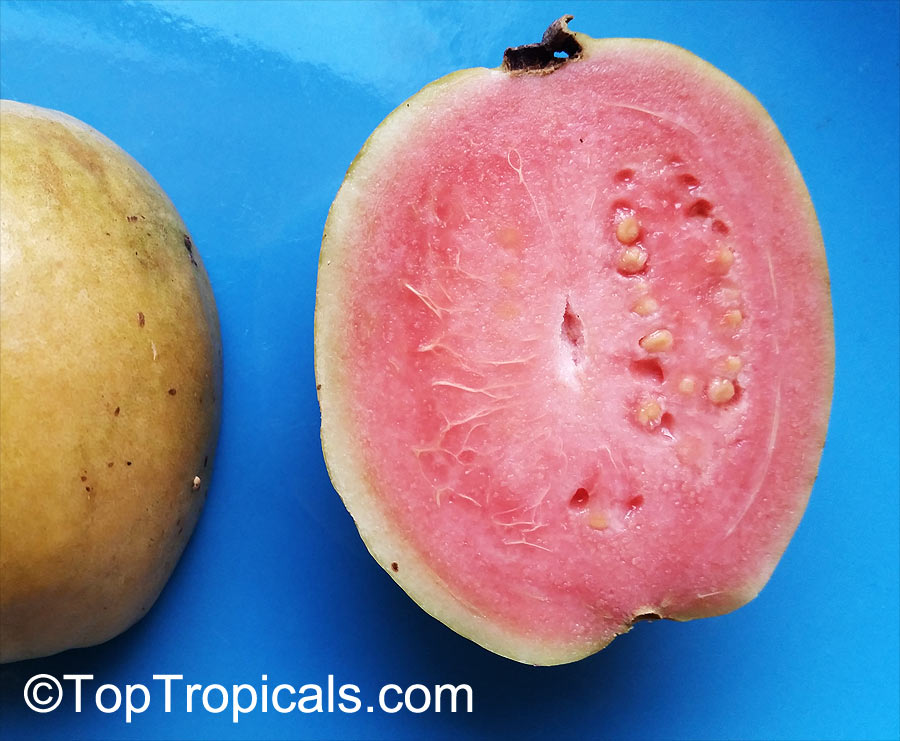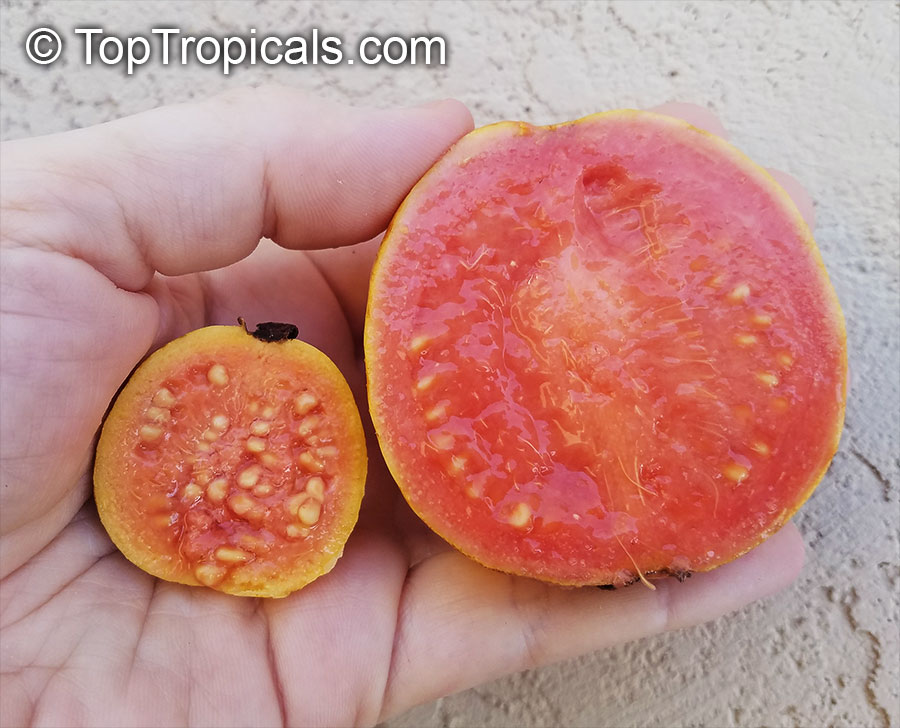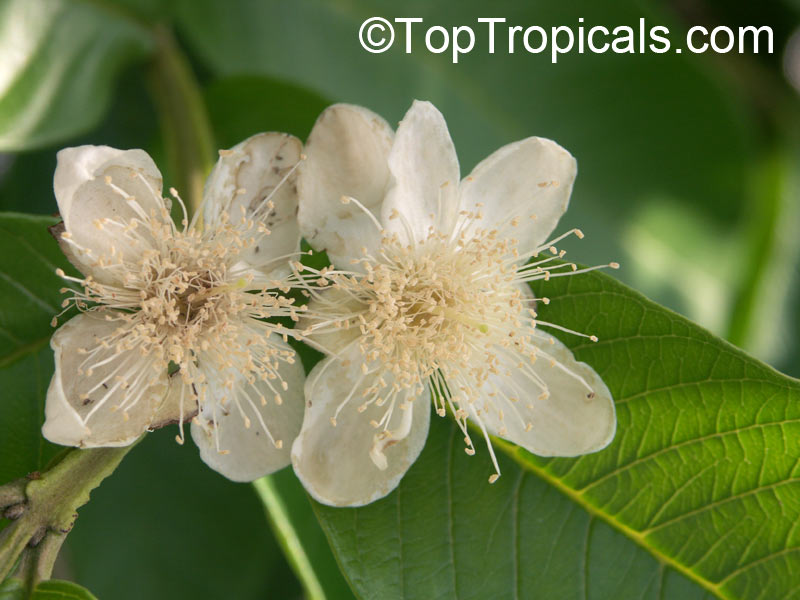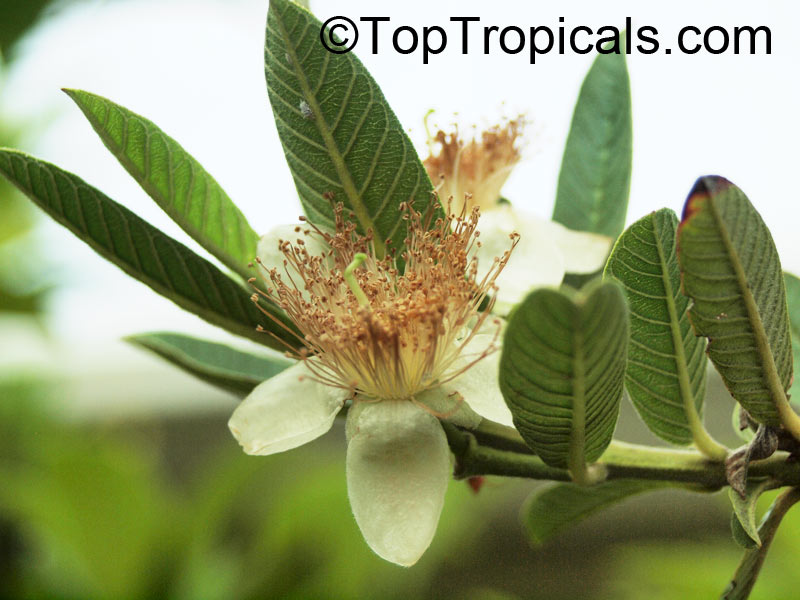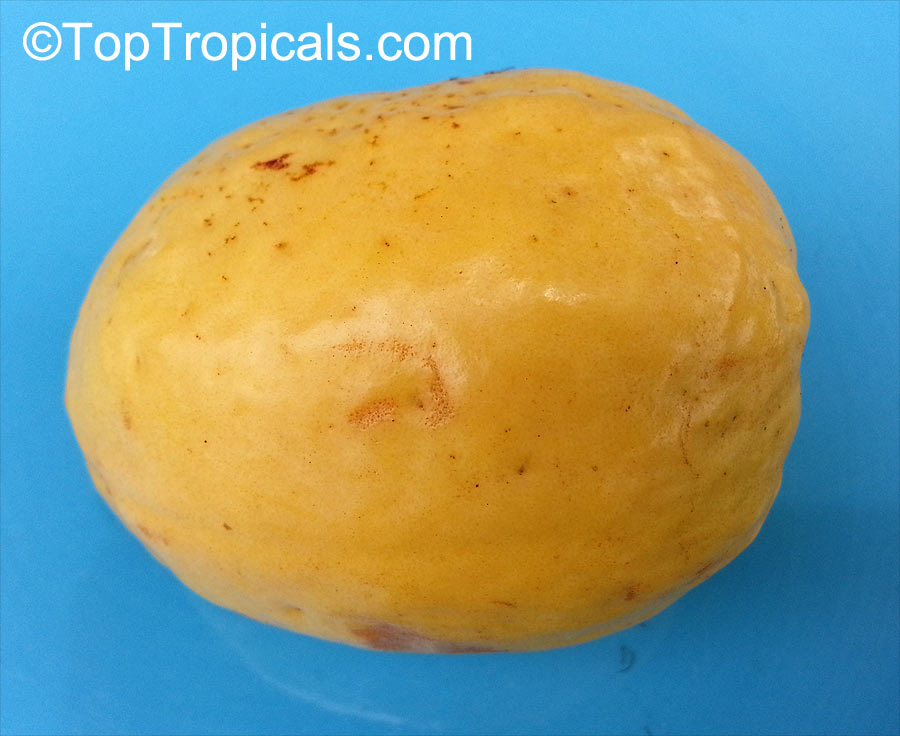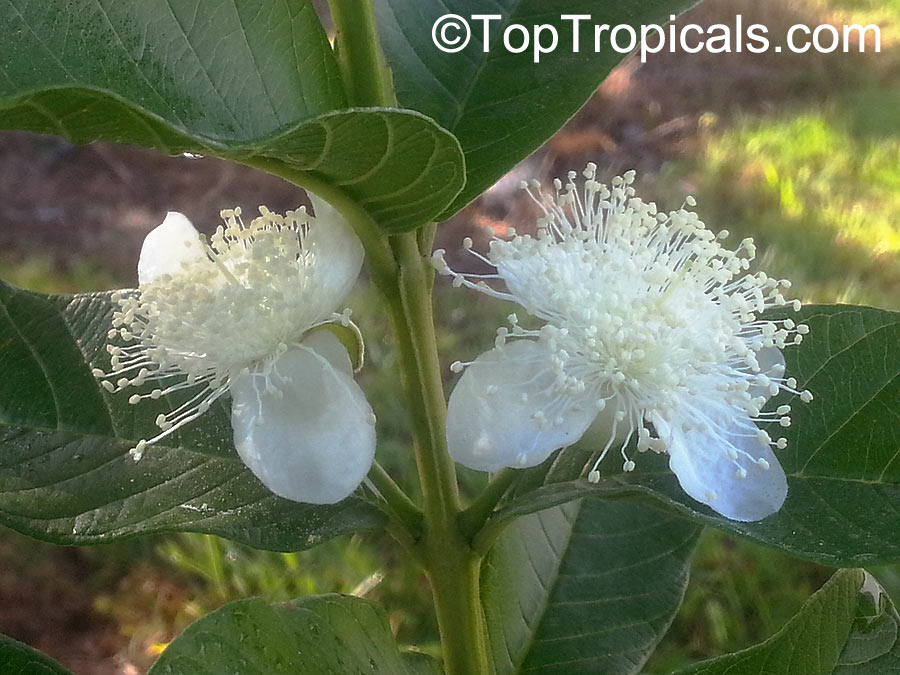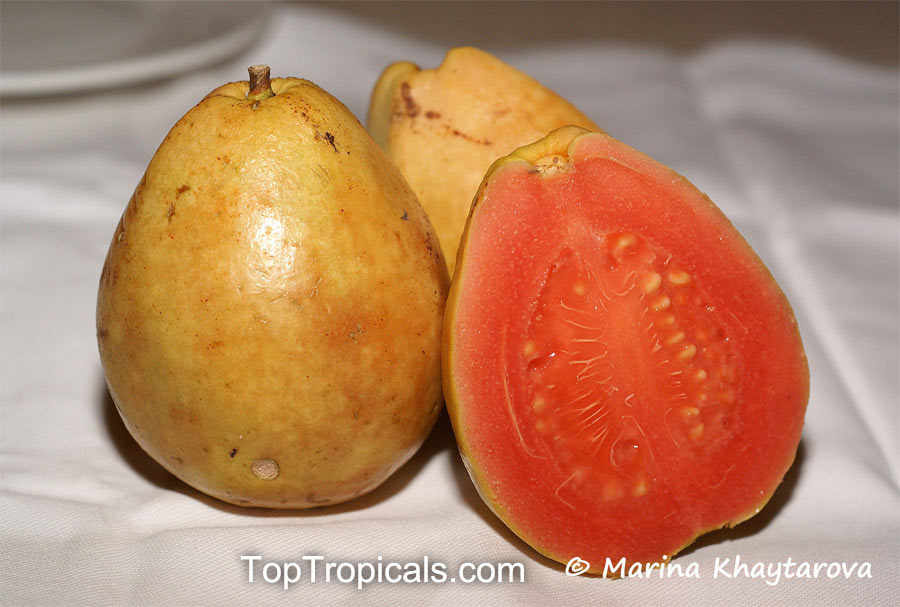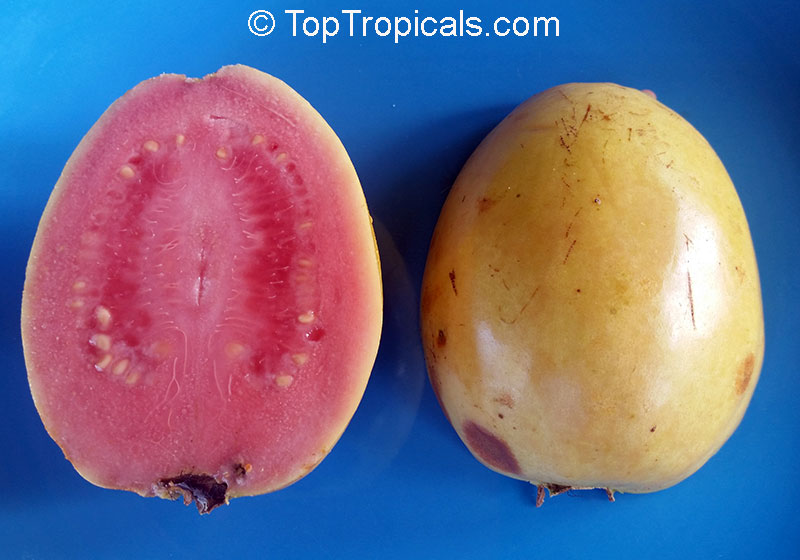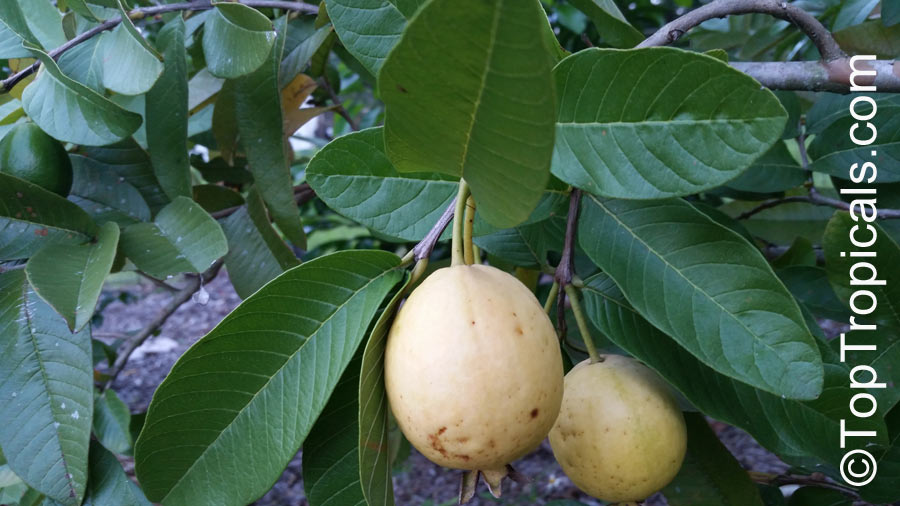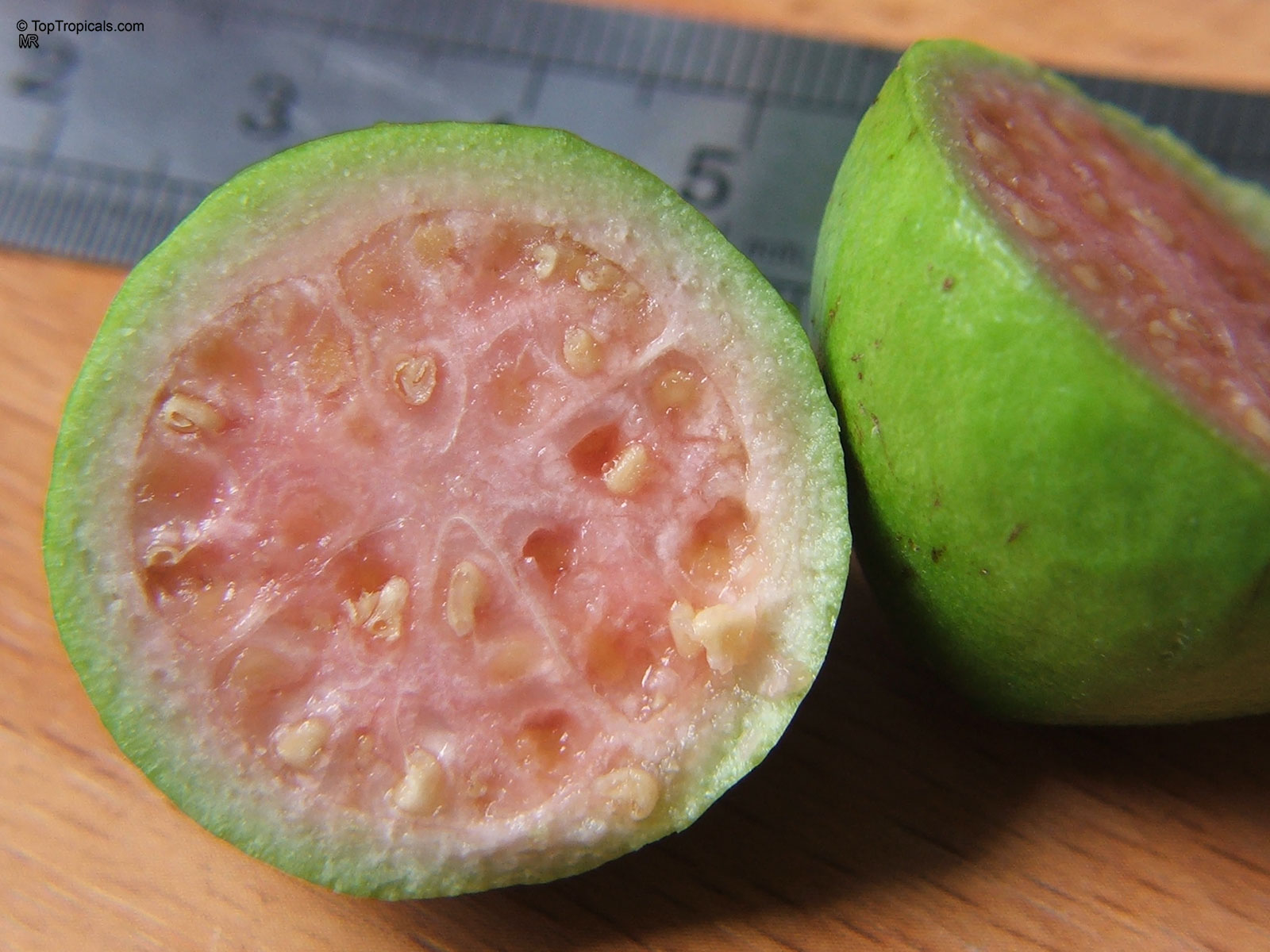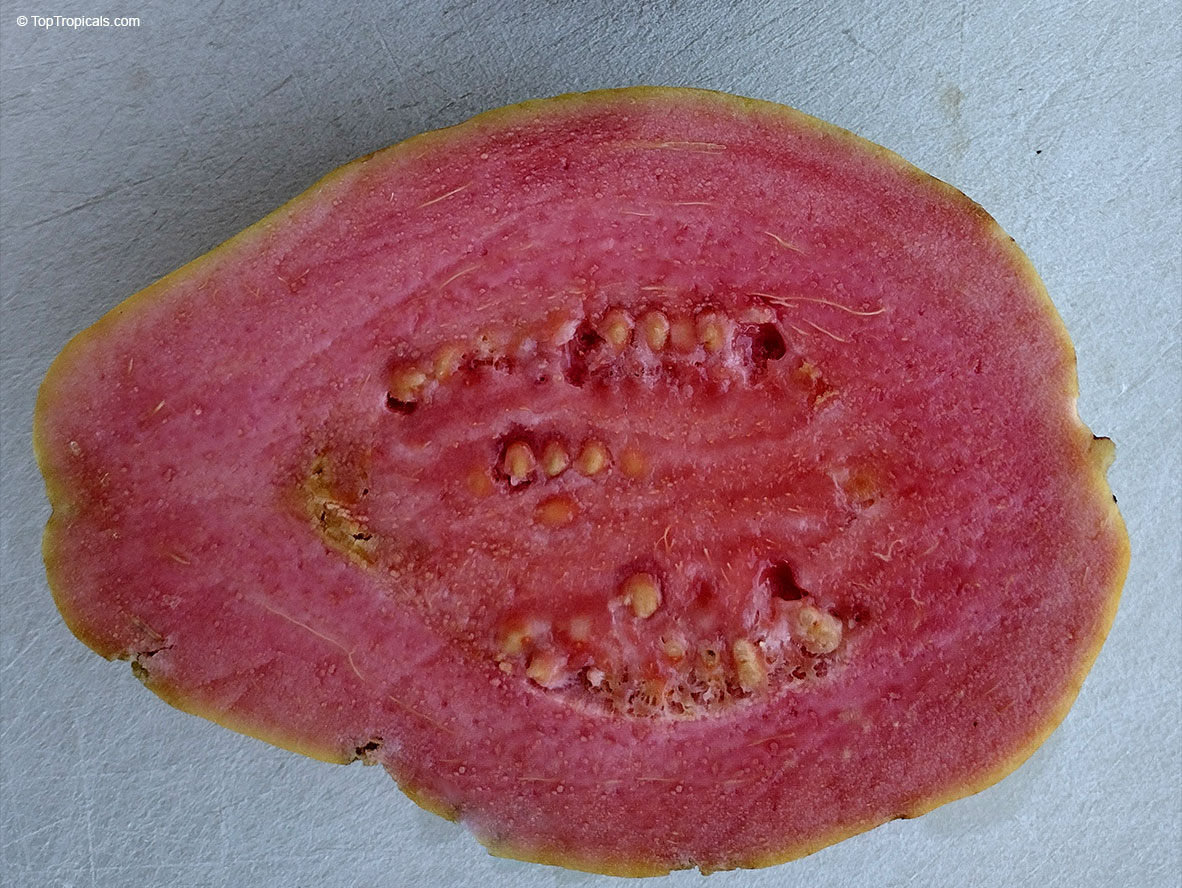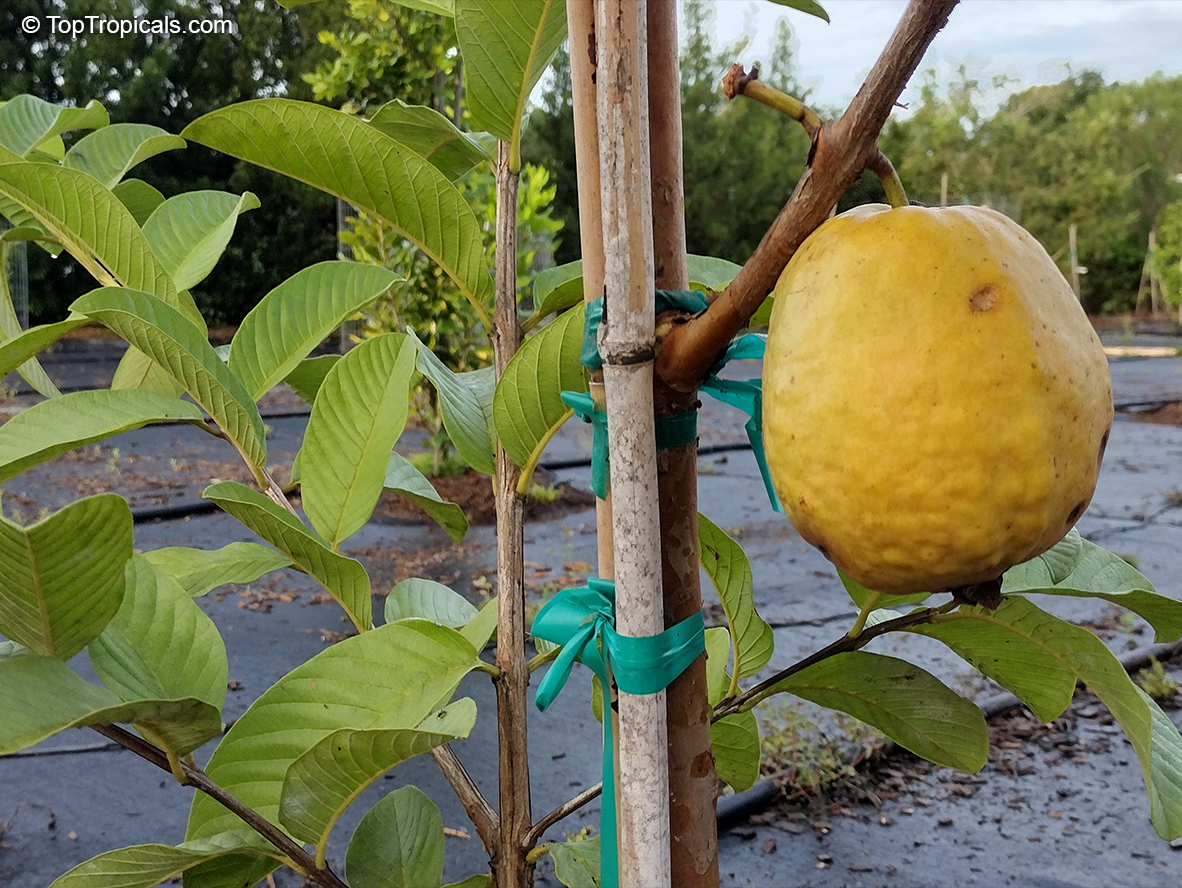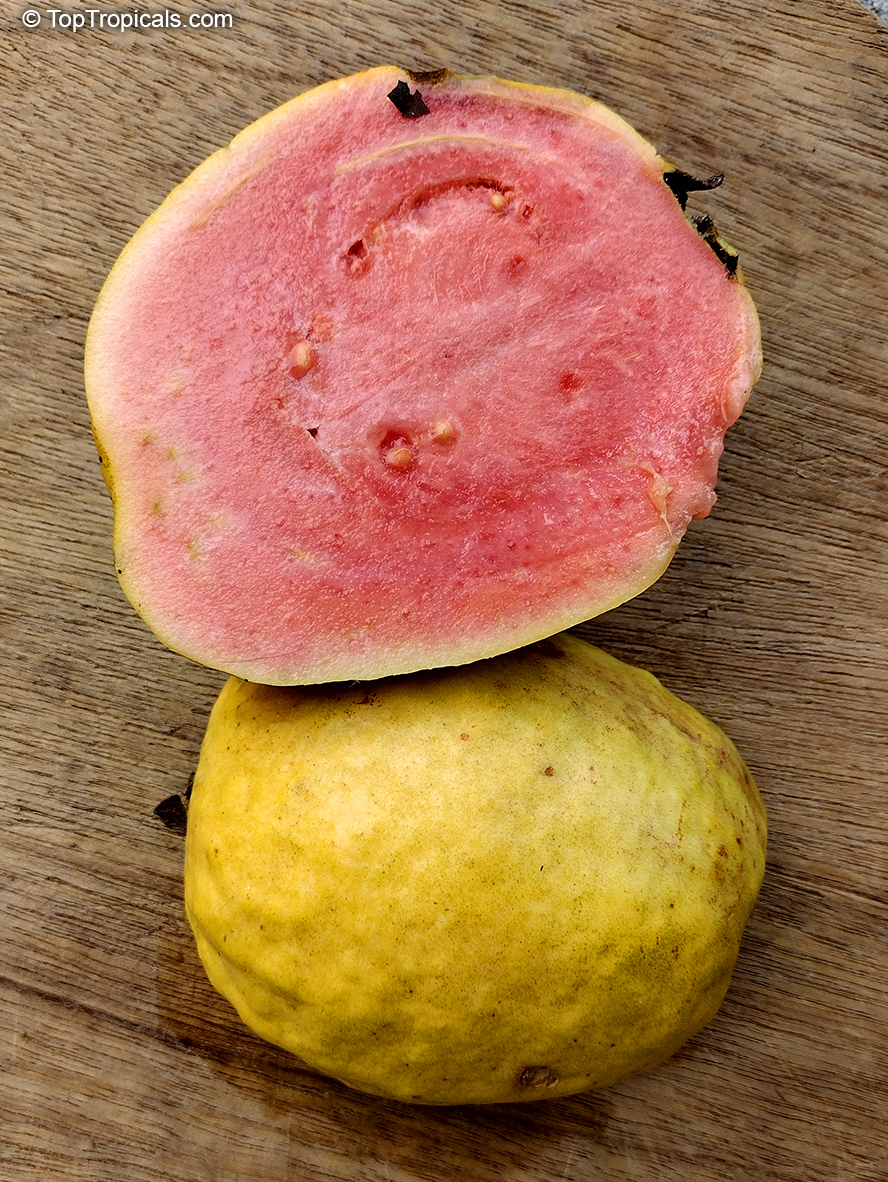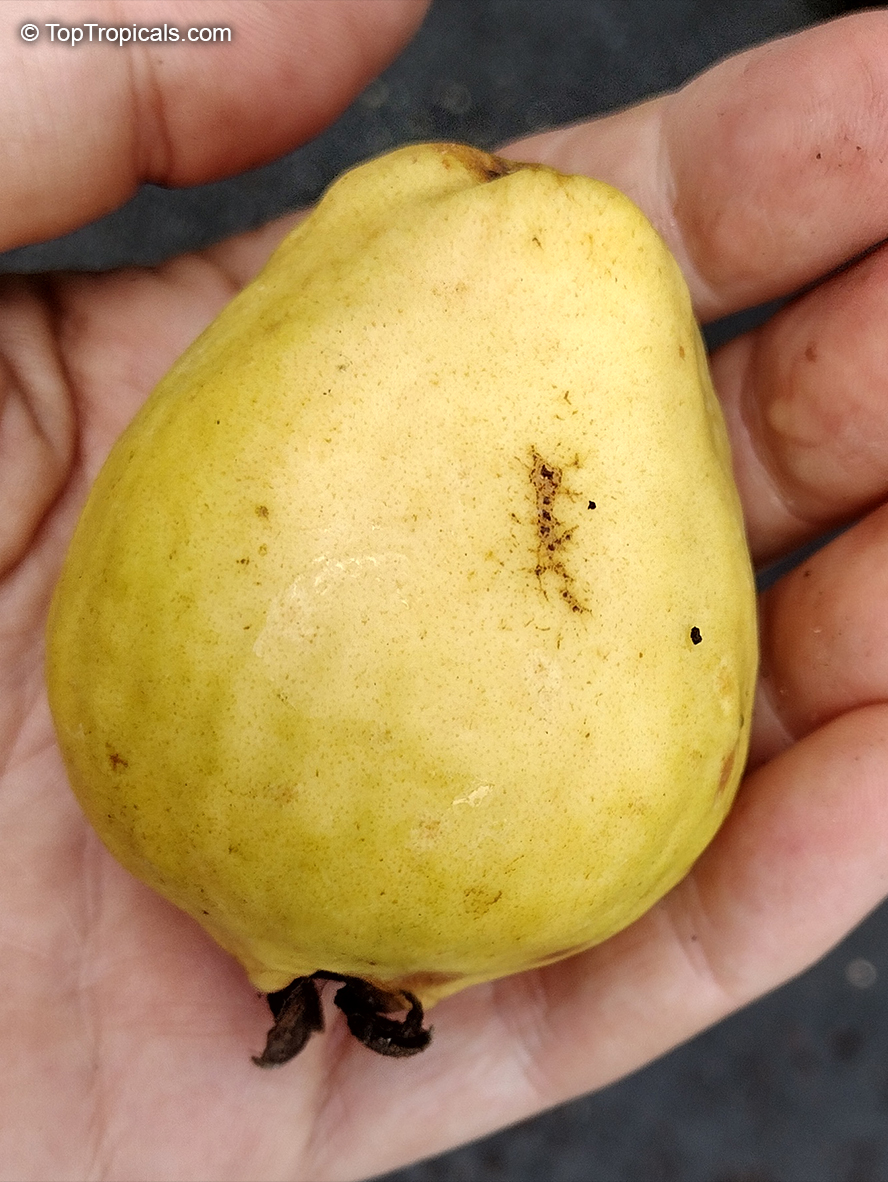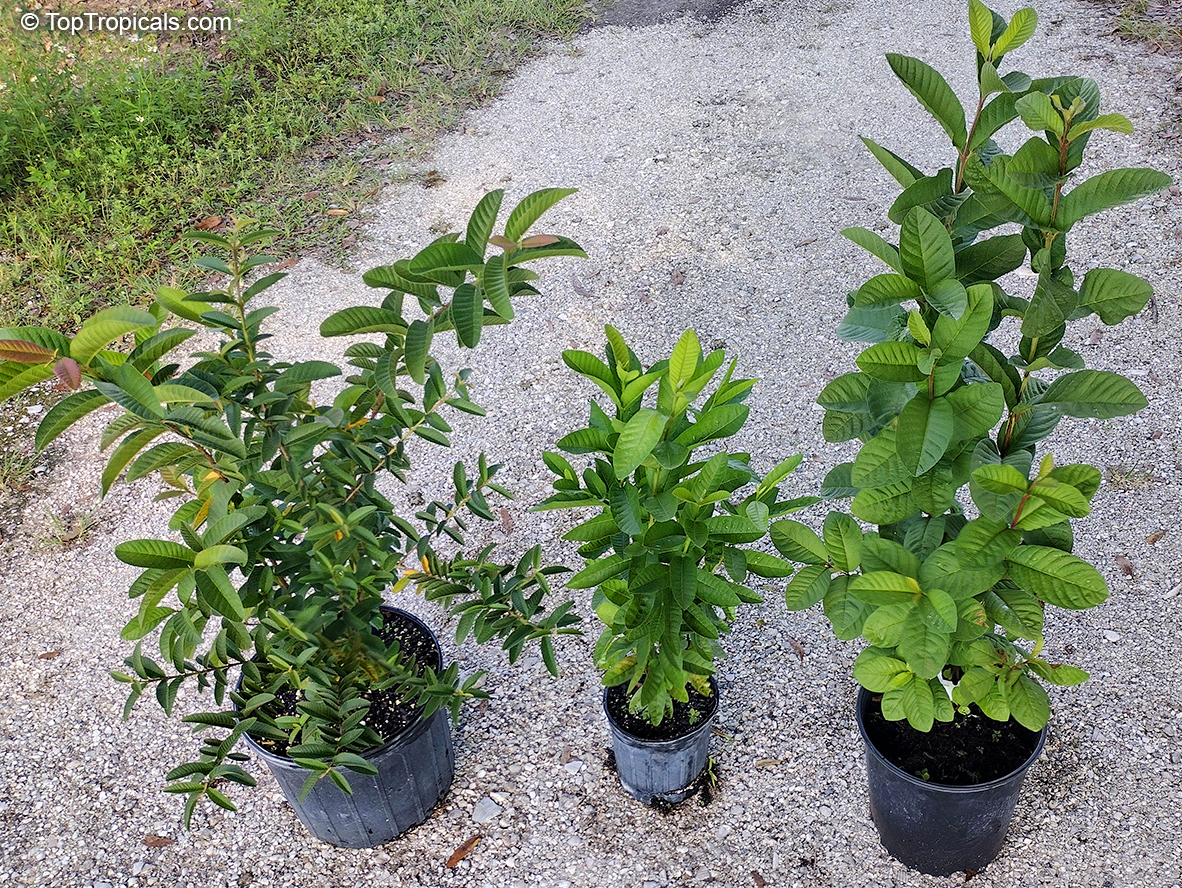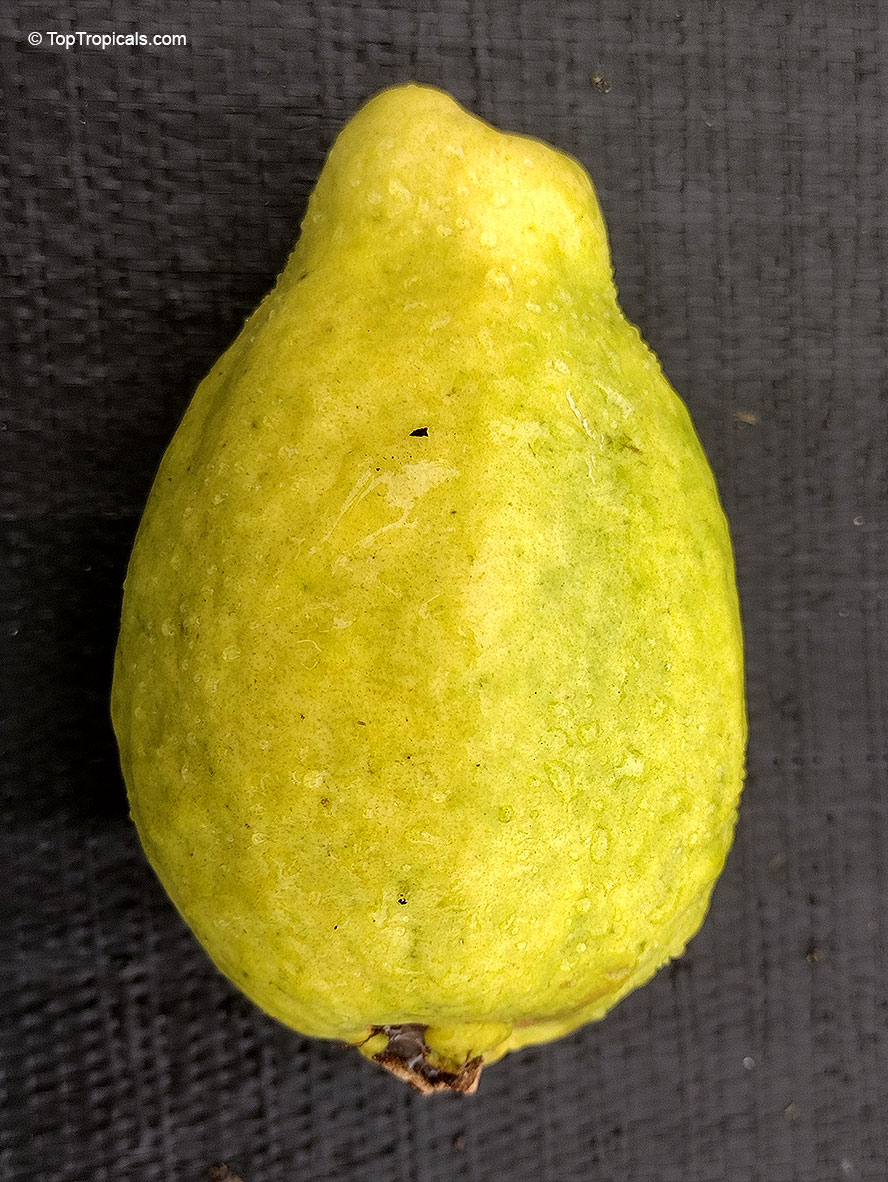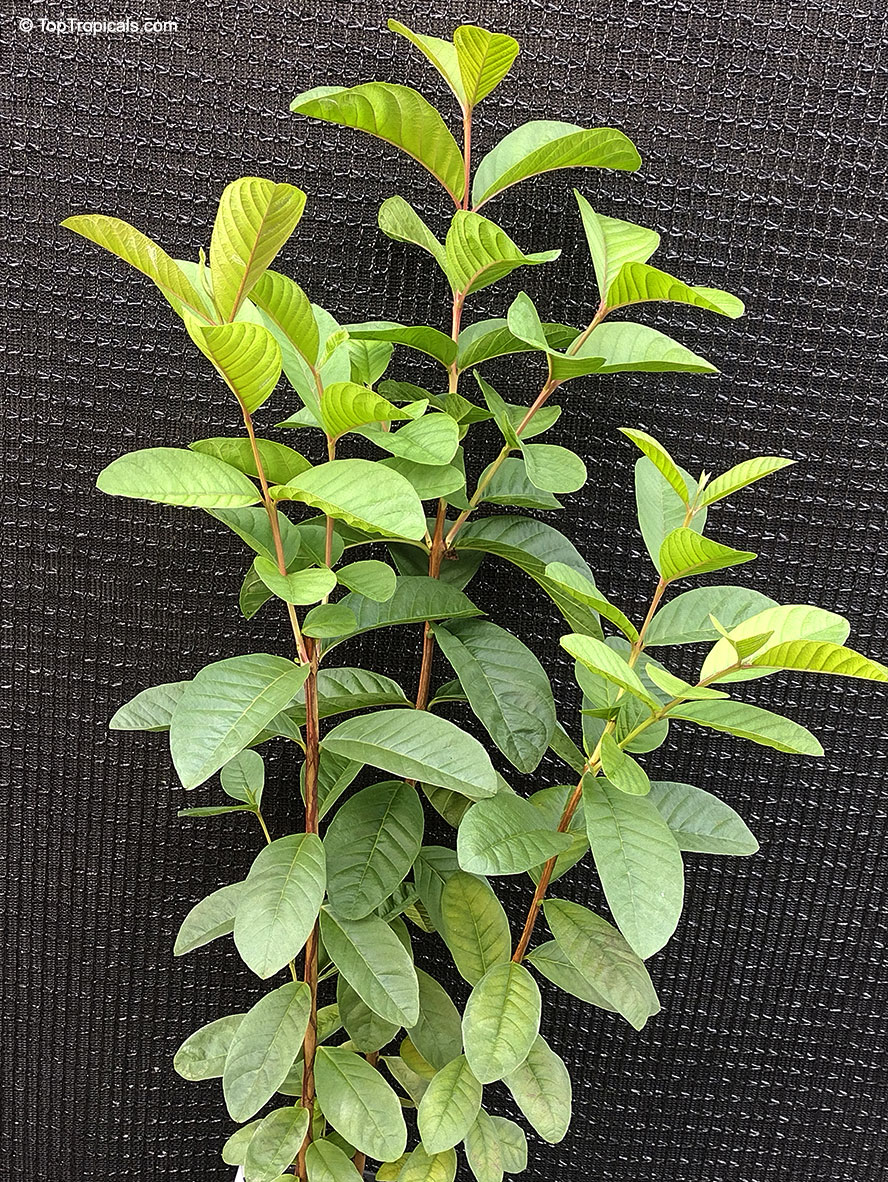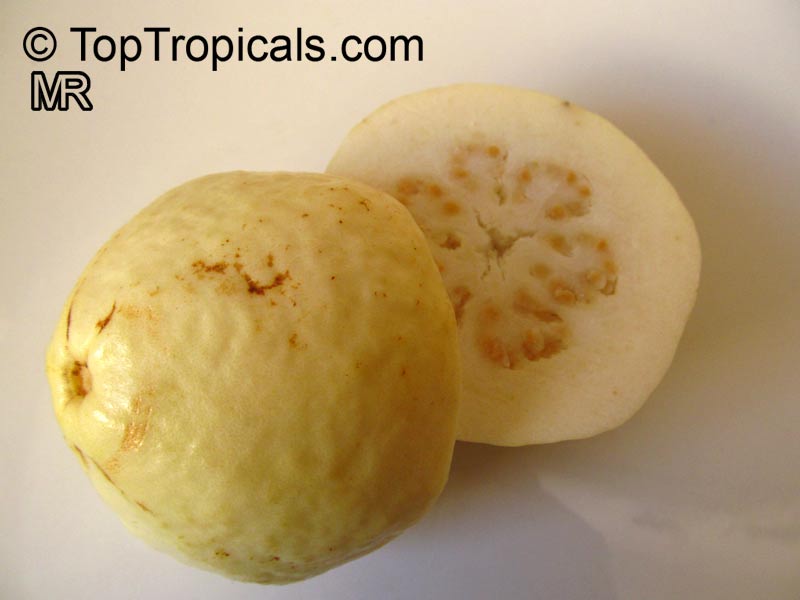Psidium guajava (Tropical Guava)
Top Tropicals Plant Encyclopedia
Botanical name: Psidium guajava
Common names: Tropical Guava, Guajava
Family: Myrtaceae
Origin: Tropical America
Hardiness: 25°F









The Guava is well known throughout the tropics, many people are familiar with it because of the large number of products made from this aromatic fruit. The plant is well distributed throughout the tropics and subtropics. This is a low growing tree up to 25 feet high and about the same spread. The bark is an attractive reddish brown and peels off revealing smooth gray bark beneath. The large coarse opposite leaves have prominent veins and young wood often is four-angled or winged. Trees flower and fruit throughout most of the year. Flowers are usually white and about an inch across with many stamens. Fruit size and shape is variable - from 2 to 4 inches across, from round to oblong and even pear-shaped. Guavas typically have very thin skins, easily bruised, so they have to be handled carefully when being shipped. In shape, size and other characteristics, the fruits of the numerous varieties are extremely variable. In color, the skin may be greenish white, yellowish, or pink. Flesh color inside ranges from light to dark pink or white with the pink-fleshed varieties having less acid than the white-fleshed. In flavor, varieties range from sweet to tart, all with the characteristic musky flavor and odor of the guava more or less pronounced. Most varieties bear many seeds embedded in the soft pulp of the center, there are a few varieties that are almost seedless.
Upon ripening, the fruit becomes soft and juicy. It may be eaten fresh, made into a juice or nectar contain fruit pulp, or made into preserves, jam, jelly, or paste. A distinctive, savory-fresh aroma of fruit is thermostable, thus survives processing. The guava is an excellent source of vitamins C and A.
Guava is a good tropical fruit tree not fussy on the soil quality, and produces fruit year after year. It is relatively cold hardy. Mature trees freeze at about 29 F, but young plants can be injured by light frost. Tropical Guava should be protected from extreme salt spray. Once established, it withstands drought well, but fruits better when watered on a regular schedule. The trees are rapid growers and start fruiting in 2-3 years from seed, however for specific varieties grafting is necessary as they don't come true from seed. Guavas are fast growers and heavy feeders, and benefit from regular applications of fertilizer.
Guava can make a nice container fruiting specimen, plants start blooming and producing fruit when they are as small as 1 gal pot size. It responds well to pruning and can be kept in compact bushy shape. In fact, Guava is probably the most popular container fruit tree among tropical plant growers.
Using SUNSHINE-Honey increases fruit production, fruit size and quality. On the photo below you can see Guava fruit without (left) and with SUNSHINE-Honey applications.
Similar plants: Psidium guajava (Tropical Guava)
Recommended Fertilizer: SUNSHINE C-Cibus - Crop Nutrition Booster
SUNSHINE-Honey - sugar booster
Recommended Fertilizer: SUNSHINE C-Cibus - Crop Nutrition Booster
SUNSHINE-Honey - sugar booster
Recommended Fertilizer: SUNSHINE C-Cibus - Crop Nutrition Booster
SUNSHINE-Honey - sugar booster
Recommended Fertilizer: SUNSHINE C-Cibus - Crop Nutrition Booster
SUNSHINE-Honey - sugar booster
Recommended Fertilizer: SUNSHINE C-Cibus - Crop Nutrition Booster
SUNSHINE-Honey - sugar booster
Ordering seeds info
RECOMMENDED SUPPLIES:
Seed Germination Mix #3, professional grade
SUNSHINE-Epi - Seeds and cuttings booster
SUNSHINE Bombino - Young Plant Booster
Ordering seeds info
RECOMMENDED SUPPLIES:
Seed Germination Mix #3, professional grade
SUNSHINE-Epi - Seeds and cuttings booster
SUNSHINE Bombino - Young Plant Booster
Recommended Fertilizer: SUNSHINE C-Cibus - Crop Nutrition Booster
SUNSHINE-Honey - sugar booster
Recommended Fertilizer: SUNSHINE C-Cibus - Crop Nutrition Booster
SUNSHINE-Honey - sugar booster
This item can not be shipped. Pick up only. We can provide local delivery around Ft. Myers or Sebring, Florida. Contact us for an estimate. Non-pickup orders are subject to restocking fees.
